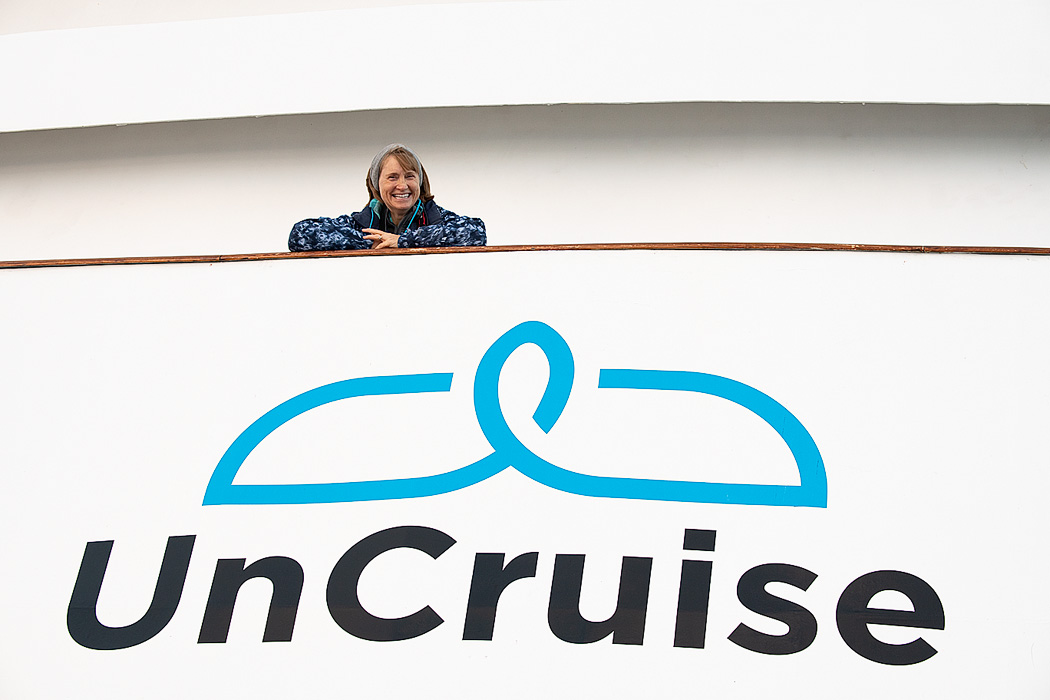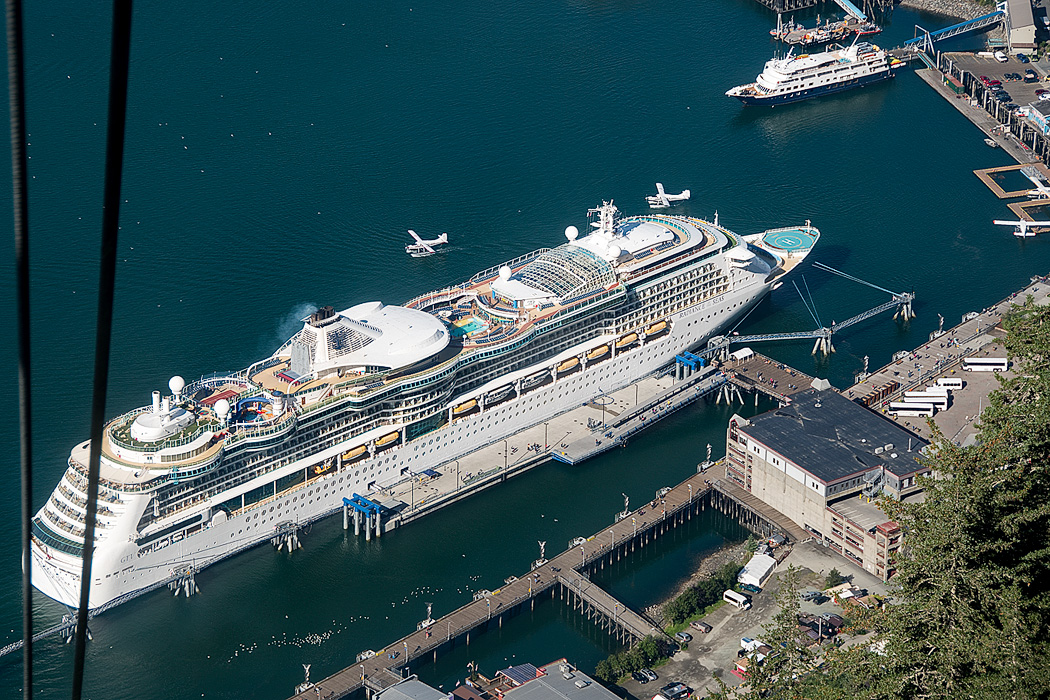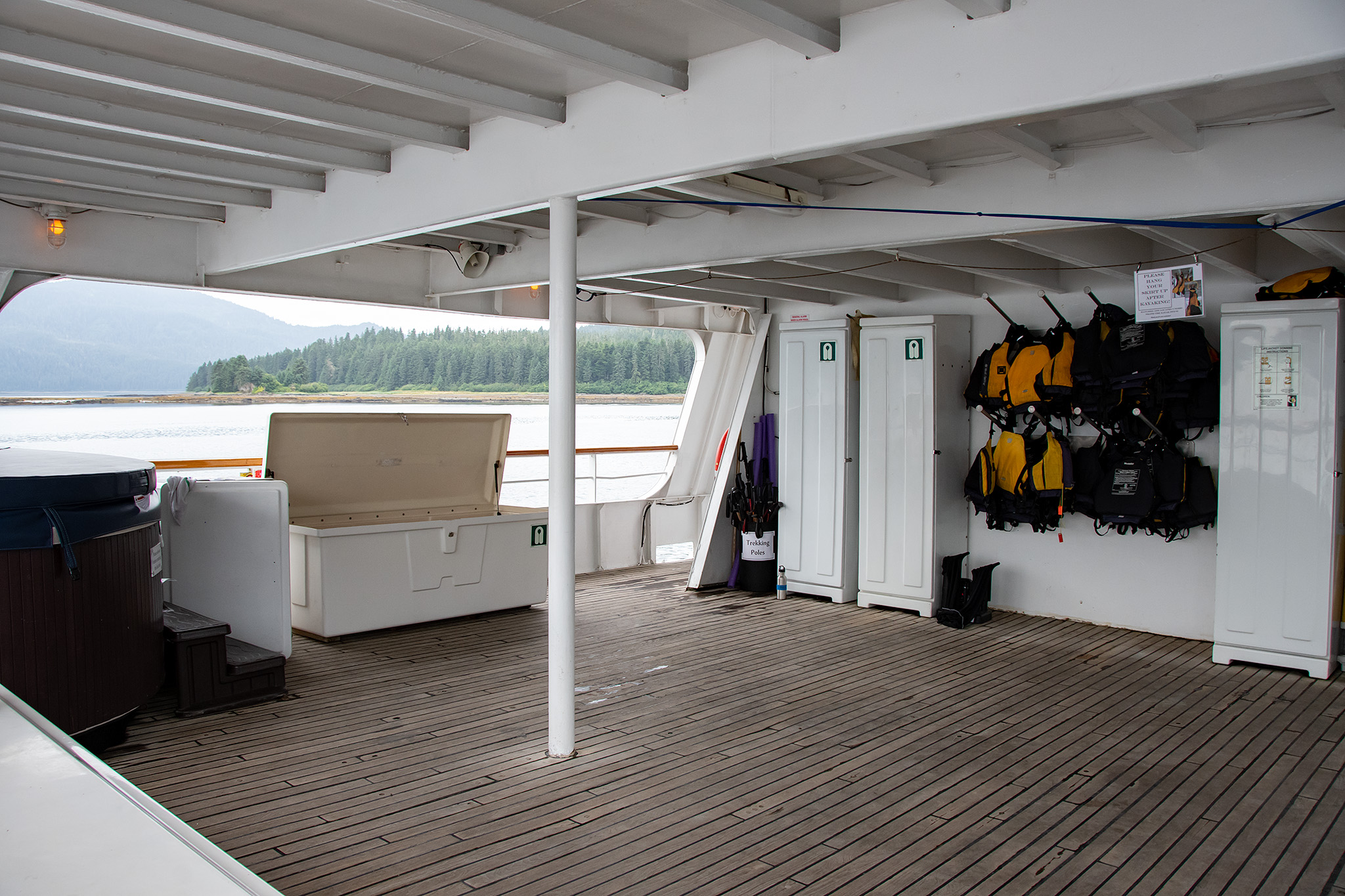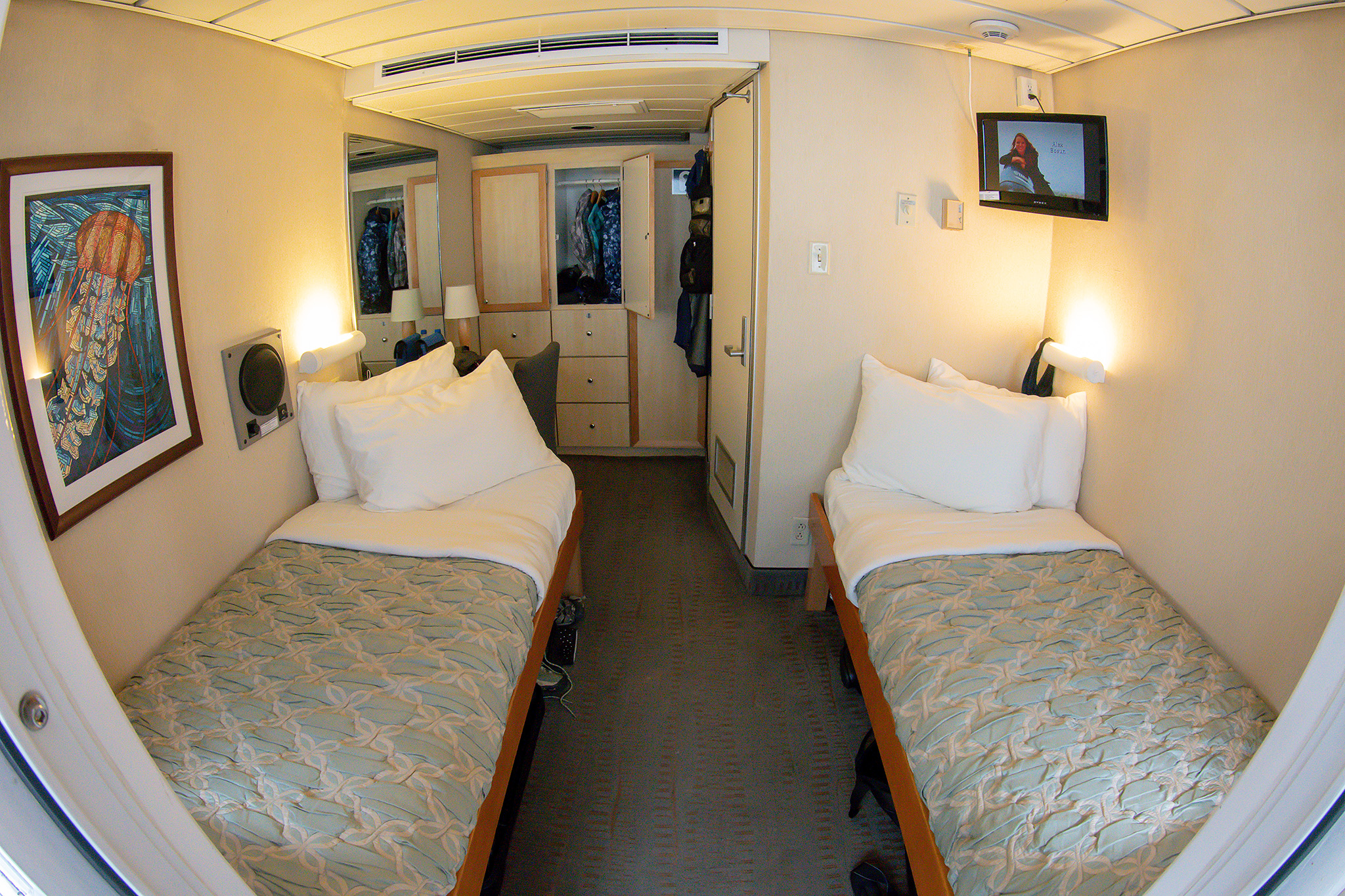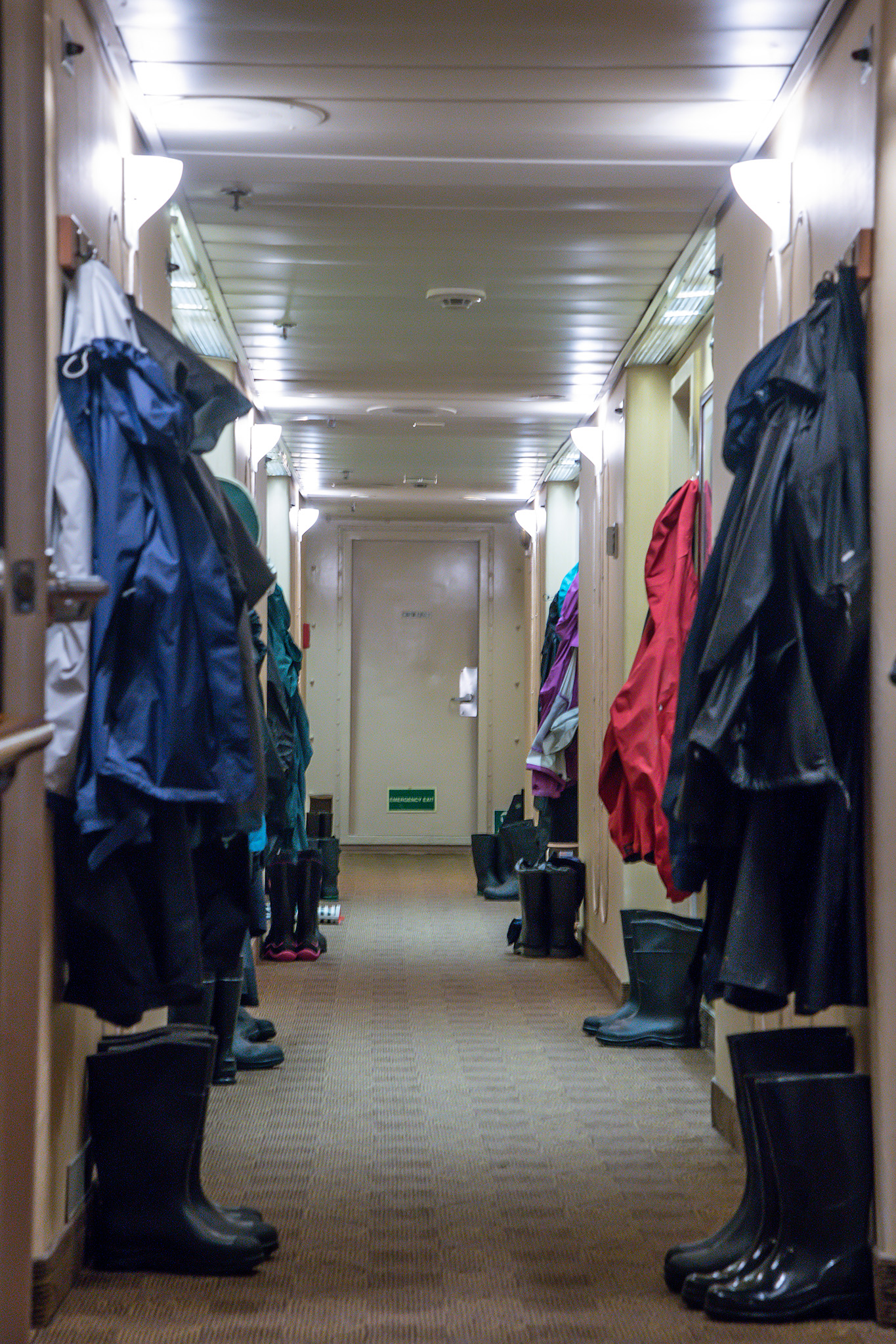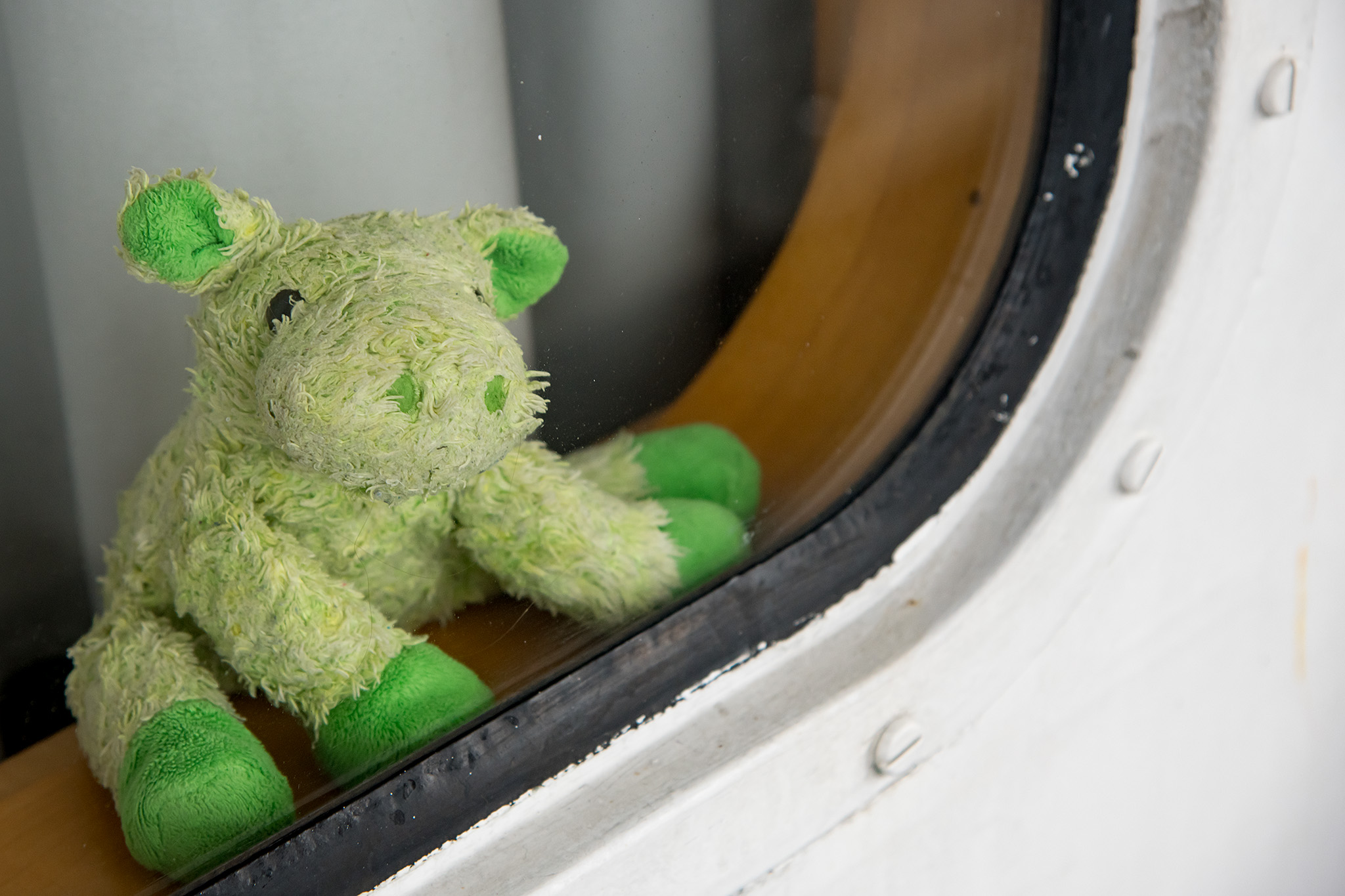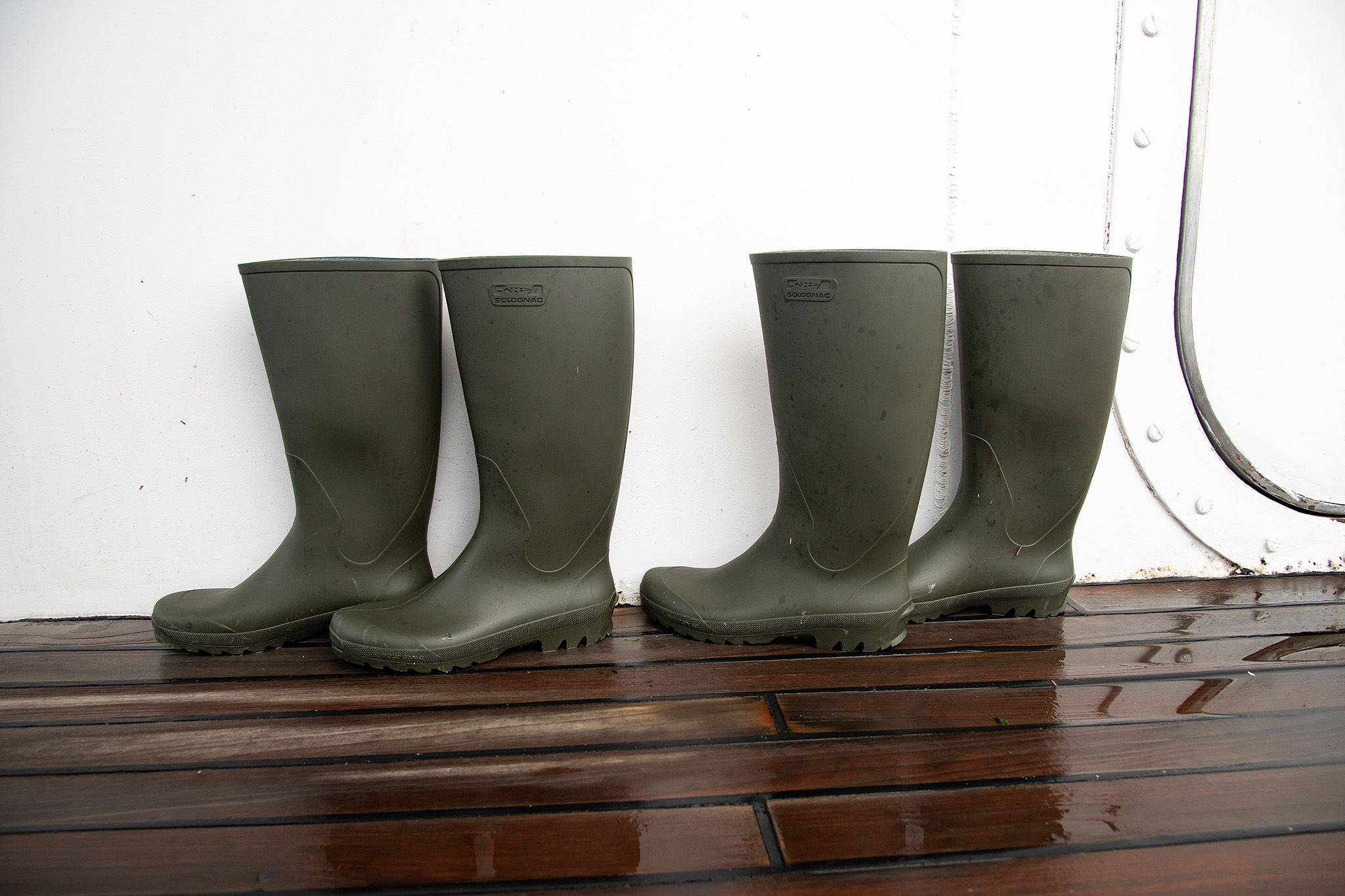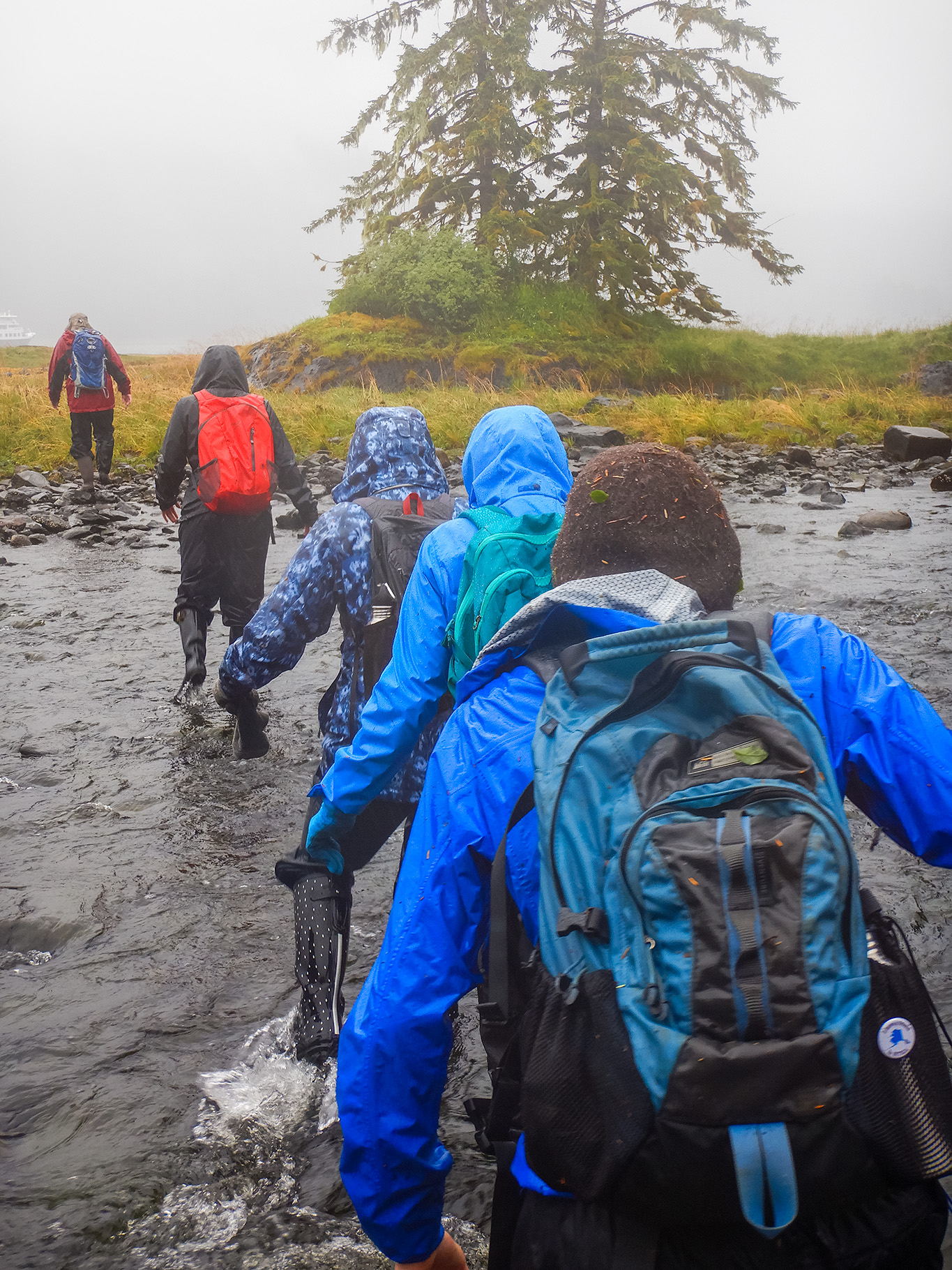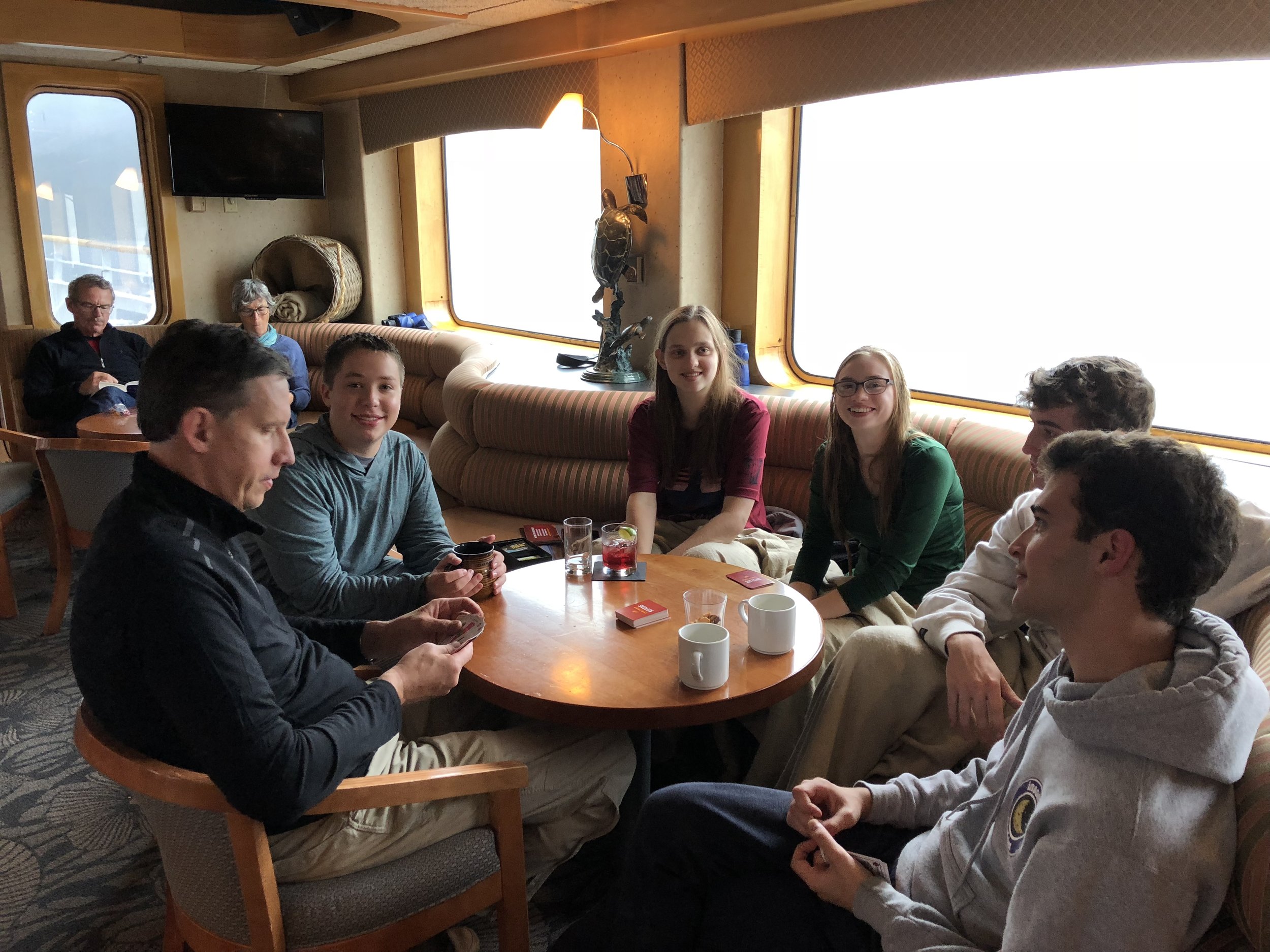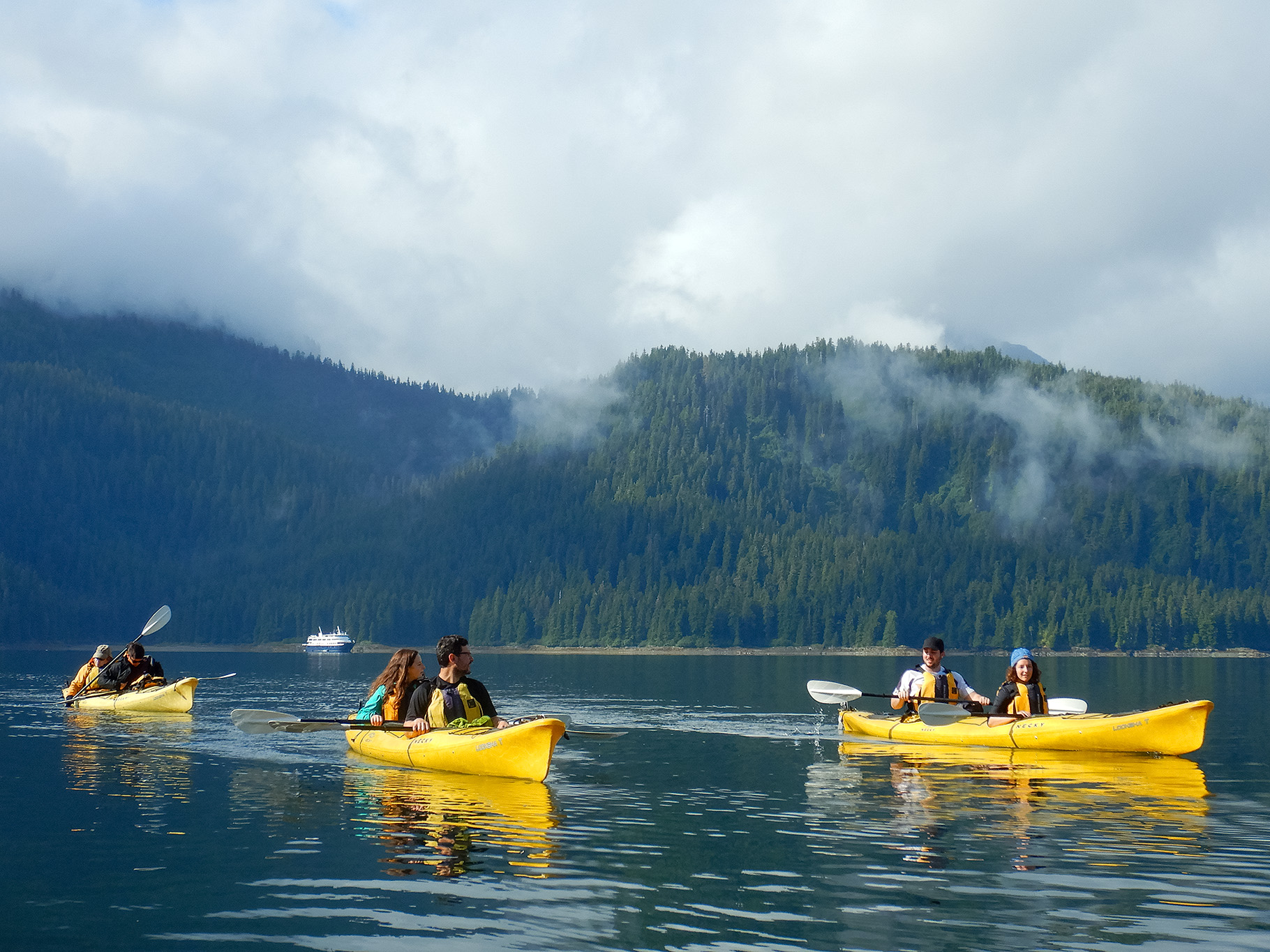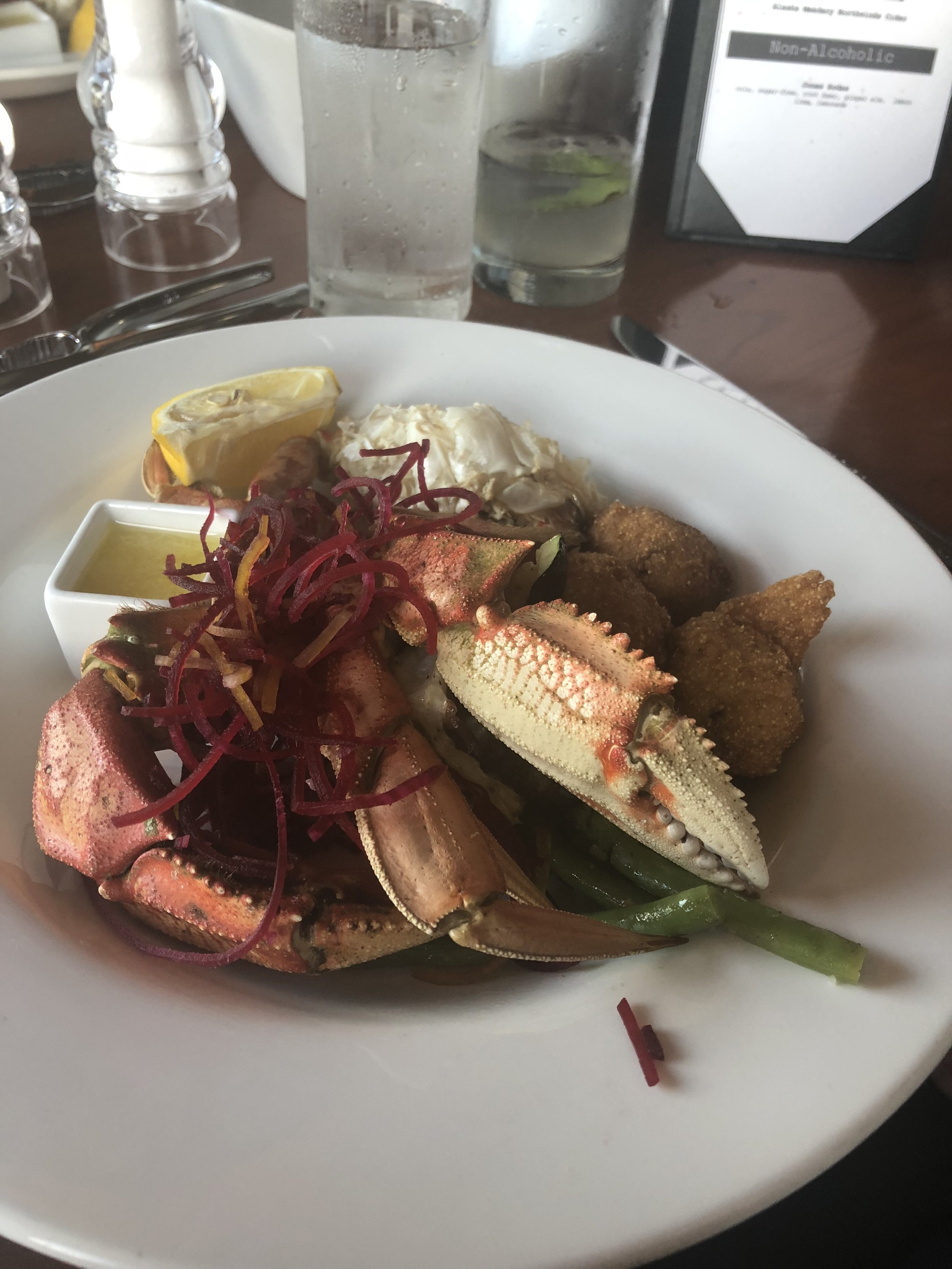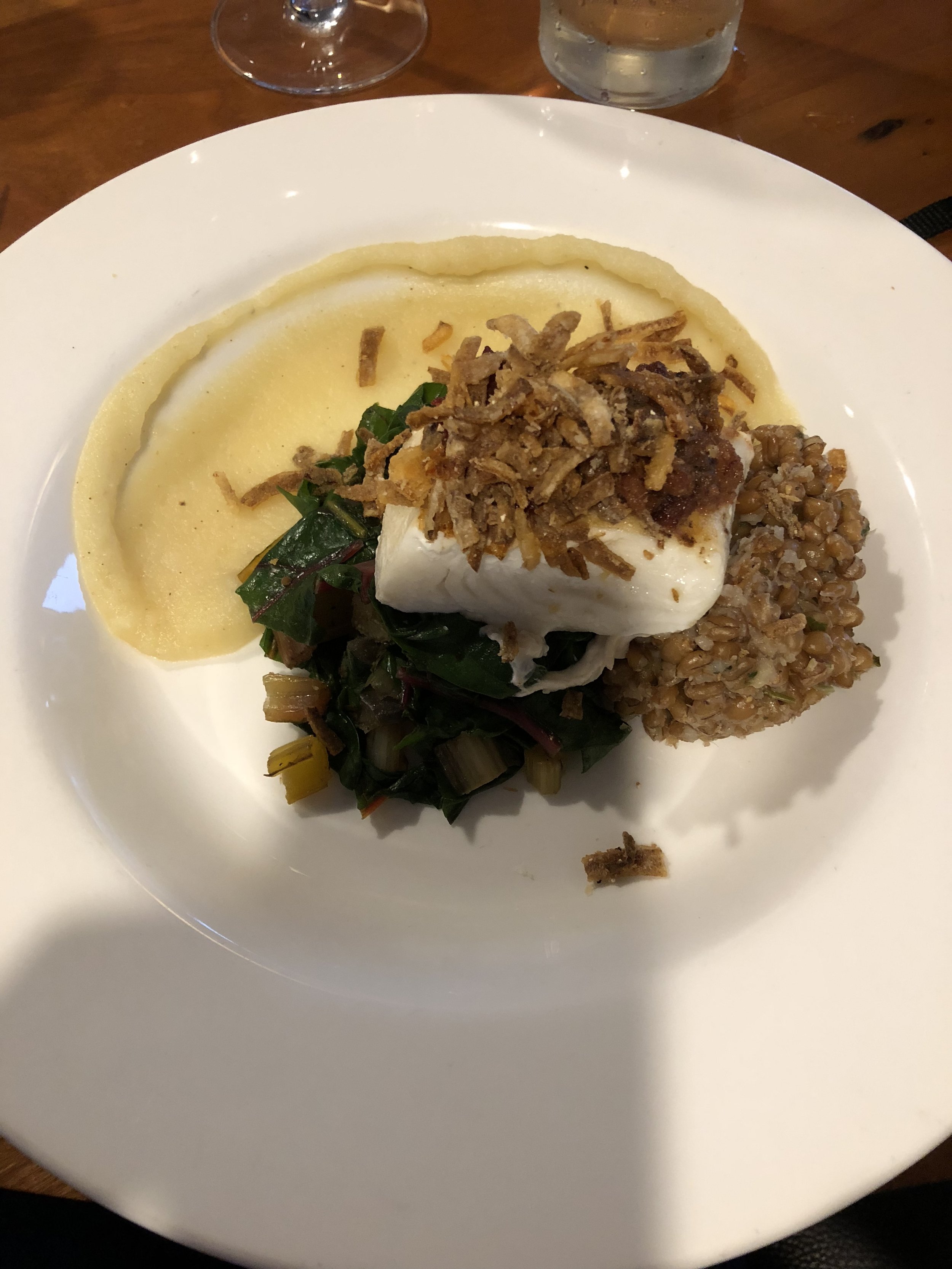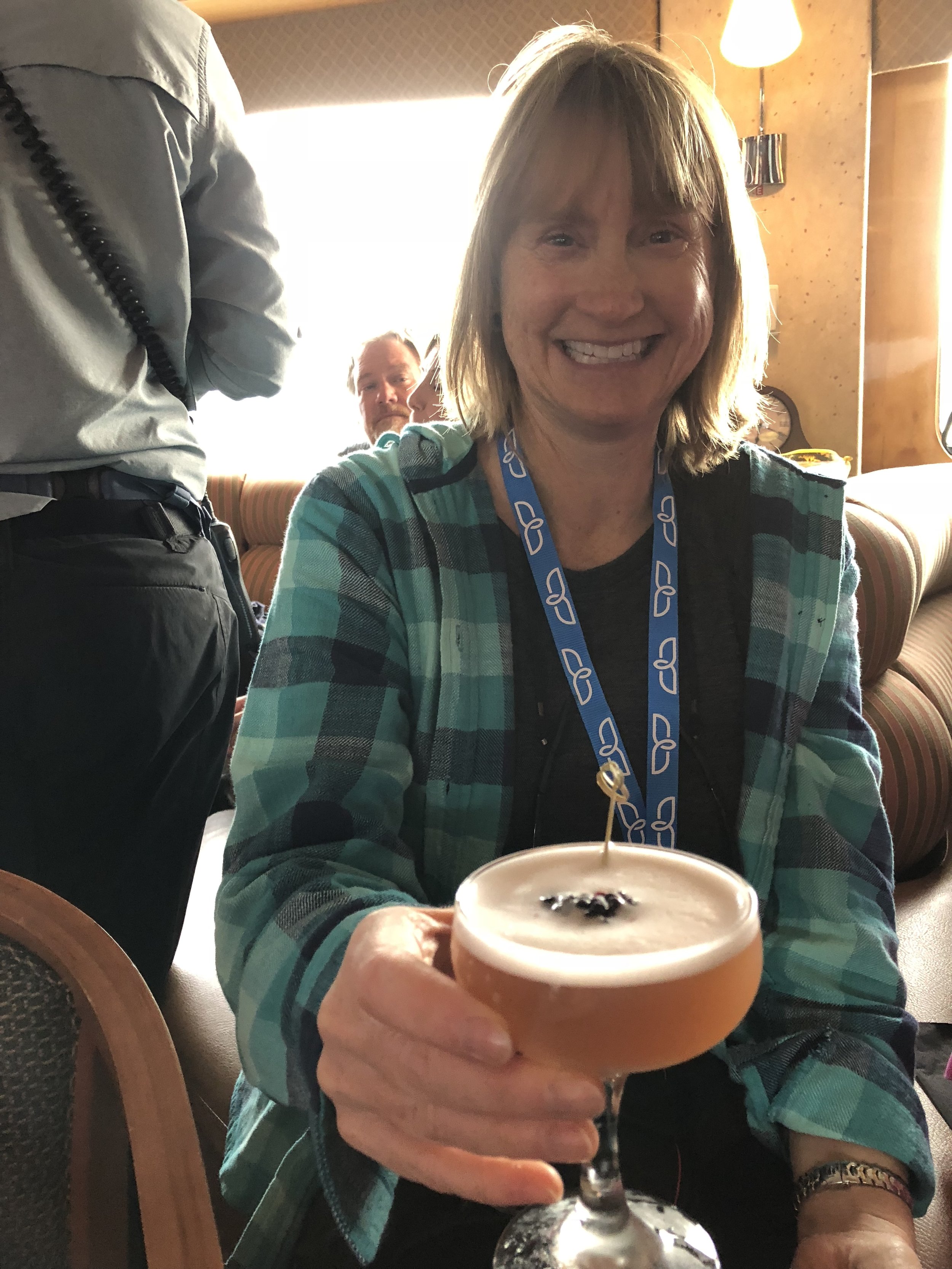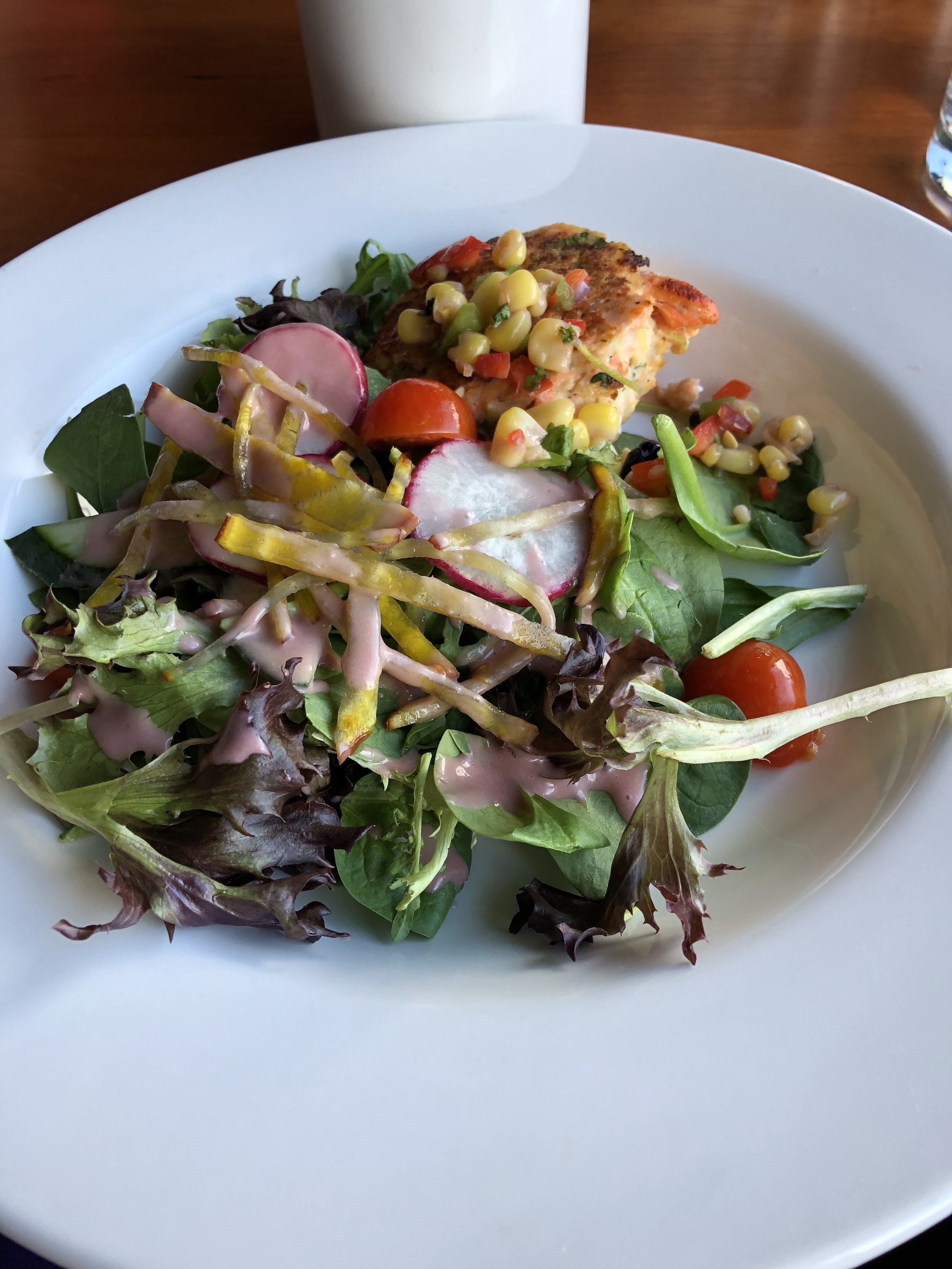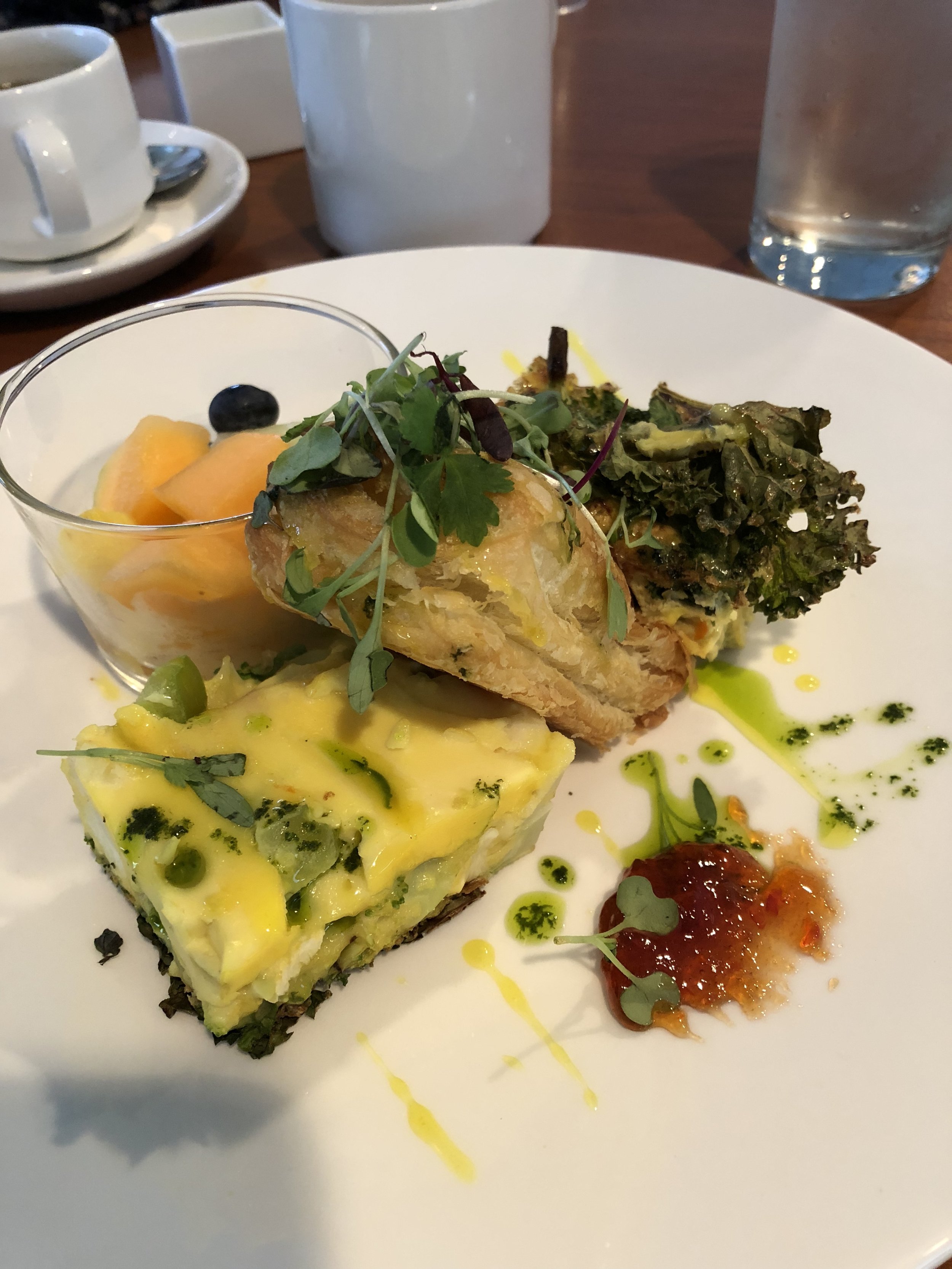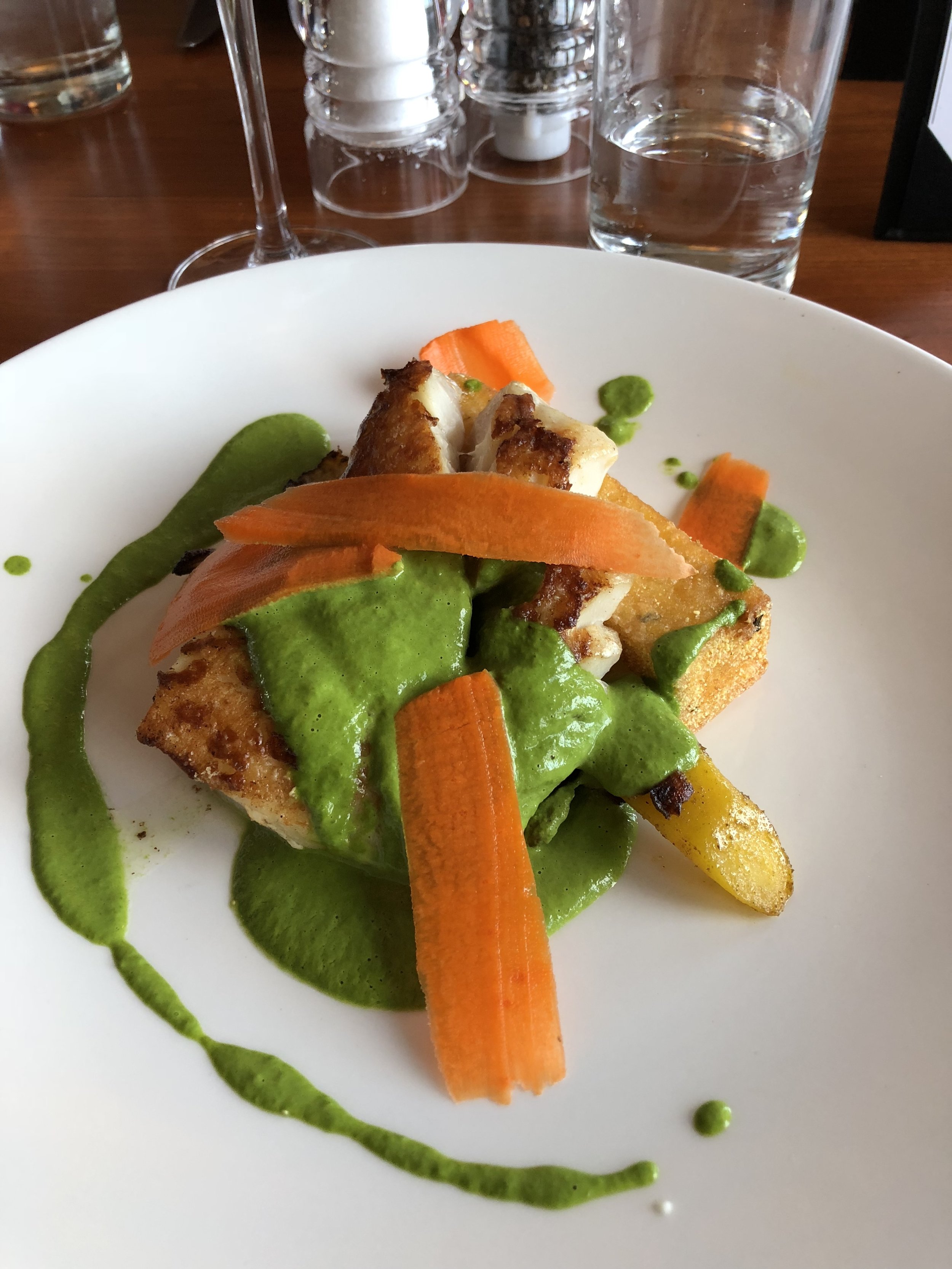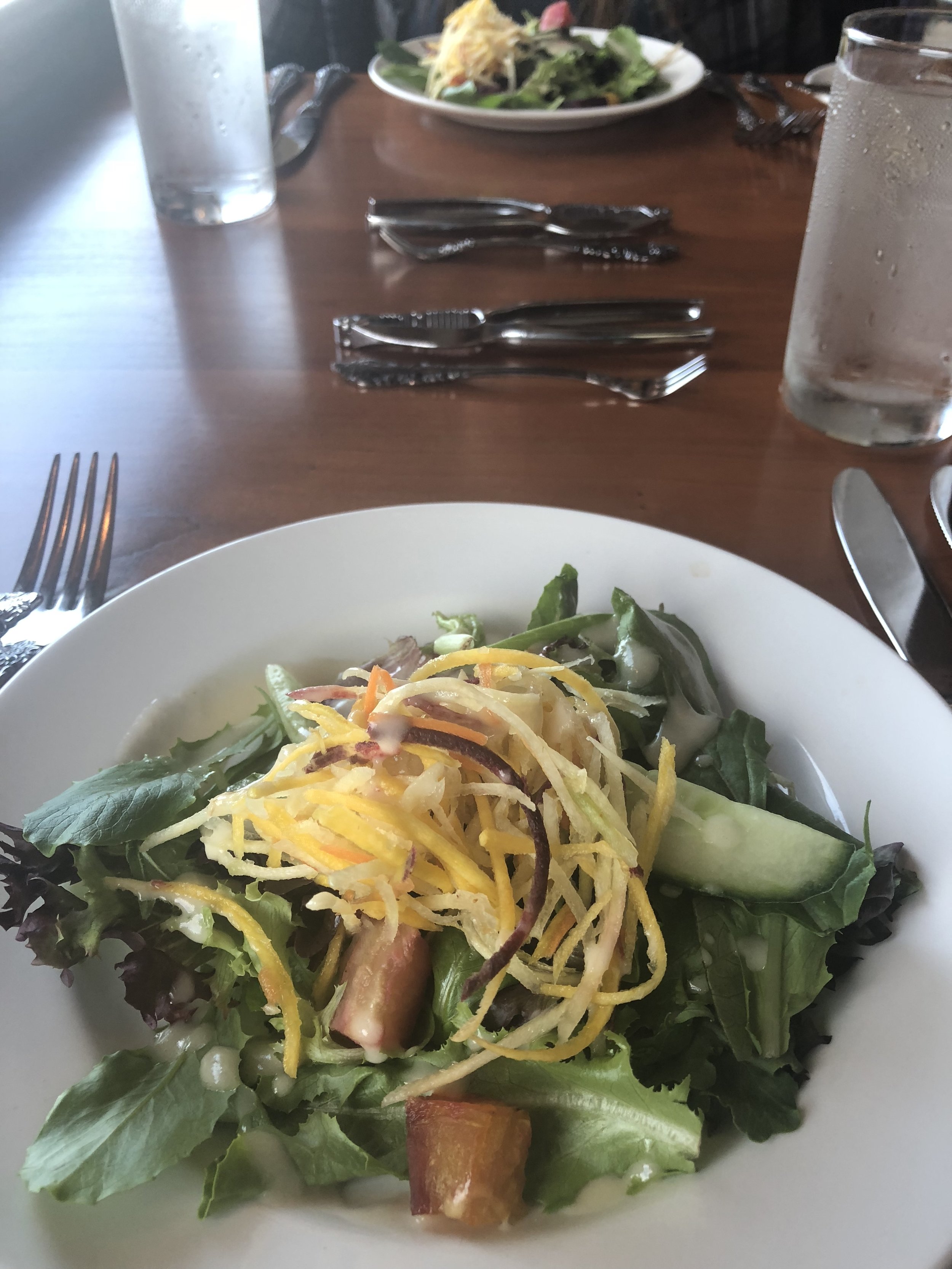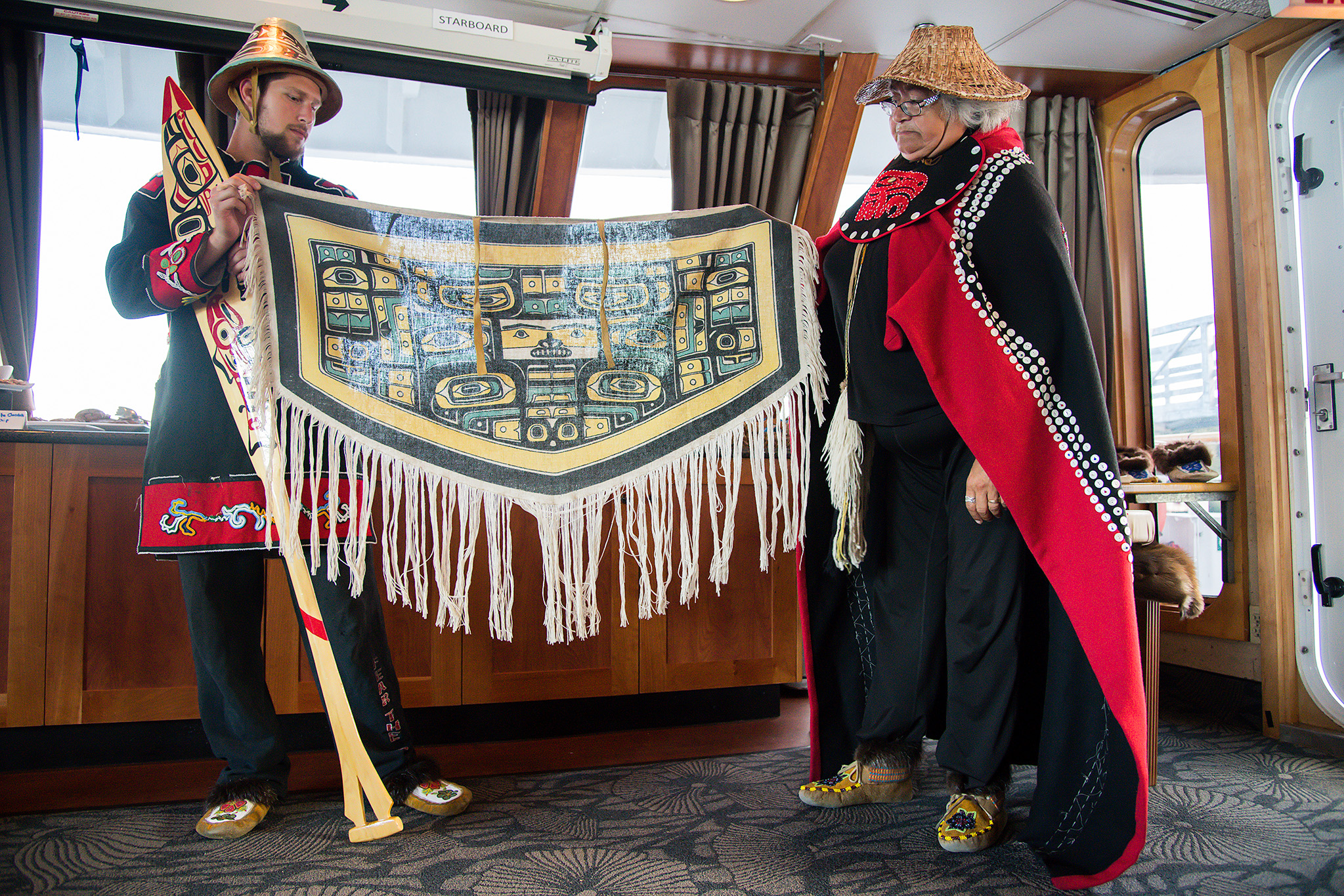It’s not very often that a brand defines itself by what it’s NOT...But in a market that defines cruising as huge ships, holding thousands of passengers, and activities that make a ship look like look like a tricked out amusement park, you can’t blame the UnCruise people for attempting to pique your interest by defining what they ARE NOT . But it still leaves the question...what the heck is an UnCruise? Well, my family just took one, on the Safari Endeavor in Southeast Alaska and I’ll tell you about the what made our UnCruise different from the dozens of other cruises we’ve taken (including cruises on some of those amusement park behemoths!)
From Mt Roberts in Juneau, the Rhapsody of the Seas (on the lower left) looms over the Safari Endeavor (upper right)
First, what UnCruise IS. UnCruise is expedition ship cruising, and it's not new. Today, it involves small ships that are both able and permitted to travel into wild, natural places.This is important in an increasingly regulated natural world- large ships and their thousands of passengers are being prohibited or limited from visiting certain sensitive natural places. Safari Endeavor, with just 80 passengers, was able to travel to less traveled and smaller places. where larger ships cannot go. The itineraries are usually more fluid and Captain is able to make decisions to spend extra time in places of interest to guests. Our most recent UnCruise took us to parts of Southeast Alaska we had not seen on a Princess Cruise we took in 2005. (click here for more on that trip)
Safari Endeavor in the Sukoi Inlet
For more about what we did on our Southeast Alaska Cruise, watch for our upcoming posts about BEARS, WHALES, Sitka, Haines and Glacier National Park.
Ship Size, Public Areas and Cabins
UnCruise is what is called an expedition cruise. Despite the constant drumbeat of mass market cruise ships advertising, expedition ships and cruises have been around for a very long time. Originally, ALL cruising was for expedition or trade...recall that the United States was "found" by Europeans after several expeditions! Smaller ships that focus on hard or soft adventure and nimble touring based on weather, wildlife and whim of the small number of passengers. You can find these kinds of cruises anywhere there is a watery wild place, Galapagos, Southeast Alaska, Polynesian Islands, or on the Amazon river. On our recent UnCruise there were about 80 passengers exploring Southeast Alaska.
The ship had comfortable public spaces including a lounge and bar, where daily briefings about the day ahead were held and where we heard lectures on Tlingit culture, wildlife and Glacier Bay National Park.
The lounge and bar area, with direct access to the bow viwing area
A promenade deck and large area open on the bow and stern accommodated all the guests easily, for scenery and outdoor wildlife viewing.
View from the Promenade Deck
A view from the upper promenade deck and the bow in Glacier Bay National Park
There was a platform off the back of the ship that accommodated the launching of skiffs and kayaks, and a staging area above it with a pair of hot tubs, where yoga classes, and safety briefings were held.
The platform for launching kayaks, paddle boards and skiffs
Aft 300, where staging for excursions and yoga classes were held.
The dining room in the stern had plenty of space for communal dining, breakfast, lunch and dinner at set times to allow for scheduling of morning and afternoon activities.
Dining Room with large windows, so you don't miss the view even during meals.
Library adjacent to the dining room, instruments and books for guests to use.
A comfortable sun lounging area was located up top in the stern, along with outdoor fitness equipment and a couple of massage rooms toward the front.
Exercise and lounge area
Sun deck lounge area
All cabins on the Safari Endeavor had windows, a few suites up top had private balconies. Our cabin had direct access to the Promenade Deck, a convenience for our photographer as we could dash outside instantly, but a slight disadvantage because of the fixed twin beds and lack of space to hang wet gear. Other cabins had hooks and trays for wet coats in boots in the hallway.
Click on the arrows to advance...our Commander level cabin on the promenade Deck, items drying in the hall of cabins on deck 2, a little friend looks out the deck 3 cabin window onto the promenade deck, boots outside the door of a cabin on the promenade deck. Below is a video from our window, sailing from Sitka
A view of the panoramic lounge windows, promenade deck and bridge above.
On small expedition ships, there is truly little difference in cabin location, everything on these small ships is only a few steps away. Selecting cabins should be based on the comfort of the cabin for your party (bed configurations and space) But unlike large ships, almost all of the cabins are located near where the "business" of the ship happens and this means it may be noisier than a large cruise ship cabin sandwiched between dozens of others. Look for cabins away from noisy public areas, or areas where a lot of noisy activities happen (such as launching skiffs or raising and lowering anchors) One of the pricier cabins on our cruise was located right outside the promenade doors, which, if passengers weren't careful, would slam closed at all hours of the night and day. Another cabin was located adjacent to a public toilet. Be sure to check the deck plans carefully before selecting your cabin.
Crew
Every crew person had more than one function. Professional guides also served as EMTs for medical emergencies, the yoga teacher were all masseuses and assisted passengers disembarking skiffs. The Bos'ns are responsible for driving the skiffs on excursions and then docking the ship later. Stewards manage serving meals, as well as tidying up cabins. The crew is "on duty" most of the day, and their can do attitude and ability to roll with the changes was one of the best parts of our cruise. The hotel manager makes sure cabins are tidy and meals are served. The chef shares what inspired him to create our meals each day. The captain, mates and engineering crew worked to keep the ship operational and because of some mechanical problems, we saw a lot of the engineering crew, and their patience with passengers hanging over their shoulders was amazing!
Our guide Krista leads the way on a shore walk through a small stream with spawning salmnon.
Our expedition leader, Megan, organized all of the activities and ensured everyone gets to do what interests them. Every day a list of activities and guides was posted. All of the guides had their specialties, but were all excellent sharing their knowledge of Southeast Alaska. The whole crew was able to adapt quickly to changes, mechanical or weather, so that passengers could fully enjoy their experience.
Lists of excursions for the day were made by our expedition leader each night and each small group is led by one of UnCruise's amazing guides. Below is a time lapse video of the carefully managed kayak launching by the crew of the Safari Endeavor
Passengers
Passengers on expedition cruises are usually active people interested in engaging in the natural world. We found the age of passengers on our cruise to be a mix. Our cruise had a minimum age of 8. Our young adults aged 21 and 23 were anxious that the cruise would be all “old people” (loosely defined as their parents age or older!) Fortunately, our late August trip was shared with about a dozen college students and young working adults, which delighted our girls. It seemed to include fewer young school children (probably due to their families having more time to enjoy a vacation earlier in summer, while college students and their young adult siblings can only squeeze in a family trip between the mid August end of summer work and internships and the start of classes in late August ) Our trip included over a dozen international visitors, many of whom sailed two weeks, or extended their visit in Alaska or the US. There were many couples between mid 40s and mid 70s, and only 4 school aged children. This type of trip appeals to family reunions and there were several multi generational family groups on board, including one guy, who eventually we all also started calling Uncle Duke. Which brings us to...
A group of all ages, enjoys a skiff tour to Hines cabin, managed by the parks service.
Camaraderie
Like any small group, you can’t be anonymous or get lost in a crowd. Luckily, our sailing, the group, even the large reunion groups made efforts to “mix it up” at meals, splitting up their party to join other groups and meet everyone.
A group on board enjoys a card game in the lounge
When you board, you won’t get a key for your cabin, they are unlocked (but can be locked from the inside at night) Jeff is a fan of studying societal behavior and noted that Dunbar's number has shown that small groups usually behave well because the group is small enough to not be anonymous and therefore everyone is held accountable and there is less worry about petty crime on board.
Brave passengers gather before going for a "polar plunge" in Southeast Alaska
Excursions were organized with groups the expedition leader felt would "jell', and evenings were spent mingling in the lounge or out on deck with fellow passengers between briefings, dinner and evening educational programs.
Instead of a sea pass card, everyone logs in and out on a board, ala summer camp style!
Activities and Excursions
We’ve been on several expedition ships over the years, and most of them share a similar ethos. Focus is on wildlife or natural activities, with some cultural activities. On Safari Endeavor, days began early with optional yoga on the aft of the ship at 6:30 AM. Breakfast was in the dining room at 7:30 AM, although coffee and continental breakfast was available earlier in the lounge. By 9 AM, the first of scheduled excursions were on their way to the staging area on the aft of the ship. Excursions included, kayaking, skiff tours, hiking, and bushwhacking (a fun "off the grid, on the compass" experience where there are no trails!) You can choose what you like, instruction is always provided and guides are patient answering questions about gear and pace activities so everyone feels comfortable. You can also choose the "nap" excursion (relax on the ship if you prefer) and skip an excursion, as we did one wet, windy day after kayaking was canceled.
A group goes out on excursion in one of the skiff boats, with Alex at the helm
Kayaking
A time lapse video of bushwhacking in the Alaska wilderness
While most days were spent anchored in an uninhabited bay, some days we did go to "civilization", Haines, and Glacier Bay NP Visitors Center, and options for activities on those days was shared ahead of time, with activities being either with the guides or on your own.
A self guided hike in Glacier Bay National Park
Above: An organized float trip down the Chilkat Bald Eagle Preserve during our visit to Haines.
Below: A walk along the shore
Around 12:30 PM, everyone was back on board for lunch, and a short rest before heading out for afternoon excursions. Some days include one morning excursion and an afternoon spent looking for wildlife aboard while under way. On our cruise, we came across a mamma bear and 2 cubs flipping rocks looking for seafood on the shore of Russel Island and we spent more than an hour slowly following their progress as they made their way along the shore. Other days, we sat idling waiting for a pod of orcas or humpback whales to surface. Getting that close, or spending that much time observing wildlife wouldn't have been possible on the larger cruise ships.
Passengers on board share space looking at bears along Russel Island In Glacier Bay NP
More pictures and video of BEARS and WHALES coming soon!
A brown bear mother and cubs looking for food under the rocks along the shore.
Early evenings back on board allowed time to share wildlife sightings and stories with passengers who took other excursions in the lounge. The young folks played card games and there was time to get cleaned up for dinner and have a briefing about the next days activities in the lounge. Inventive cocktails were cheerfully included by our bar tender Lee, and the chef put out nibbles before dinner. Which brings us to ....
Meals
Chef Brendan, came out each morning to discuss the lunch and dinner options...usually two at lunch and three, land (vegetarian), meat and sea (fish) options at night. Special requests, allergies, and picky eaters were all handled with professionalism. The food was spectacular, far better than I expected on an expedition cruise (better than anything that can be prepared for 2 or 3 thousand people on a larger cruise ship). Portions were reasonable, a little small for our young adults, but no on went hungry! The meals were created using fresh ingredients, usually inspired by Chef Brendan's international experiences, with unique mash ups of cooking styles and spices from all over the world. You choose your entrees in the morning for meal planning purposes, but it was no trouble to change your mind in the evening if you wanted to.
Use the arrows to scroll through to see some of the meals and treats we enjoyed onboard
Entertainment
After dinner, if there was wildlife to spot outside, dessert would be served in the lounge, with it's easy access to the bow viewing area. Summer in SE Alaska means late sunsets and oftentimes the evening entertainment was deciding whether to watch for a whale breach on one side of the ship or the stunning sunset on the other! On nights when there wasn't wildlife to watch, there might be a talk by one of the guides on birds, or salmon, and one night a crew and passenger talent show was held. And of course the whole week wrapped up with a special expedition slide show from our cruise. The bar was open most nights till midnight, the young people stayed up playing card games and letting Lee introduce them to new cocktails, but most people went to bed early for an early start the next day.
Tlingit people, native to SE Alaska, shared their handiwork and stories on board.
Sometimes the evening's entertainment was whale watching with dessert OR
Watching the sunset ...
What’s Included
There won’t be any nickel and dime expenses on an UnCruise for excursions, drinks, massage, yoga or bingo games (there were no bingo games except for the one in the Junior Ranger activity book) Everything on our UnCruise was included, except for tipping our crew, which you should be prepared for. Its a communal tip, which you can charge to your onboard account at the suggested amount or at your discretion. We happily tipped our crew, because of the amazing job they did sharing the wonders of SE Alaska with us.
We brought a little spending money to buy art work and souveniers in some of the places where there were shops.
Our Itinerary
We enjoyed our UnCruise itinerary because it allowed us to explore areas where we had never been, get up close to wildlife, learns about local culture and meet some interesting and engaging new people. We were also able to spend a whole day in Glacier Bay National Park, where we had some "unfinished business". I'll be sharing more about that along with many more photos and video in the coming weeks! Be sure to follow us on FB or Twitter for notification when we post something new!
